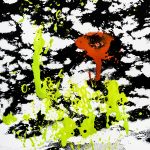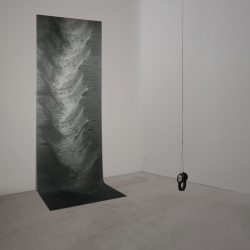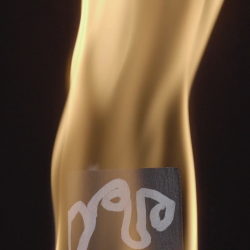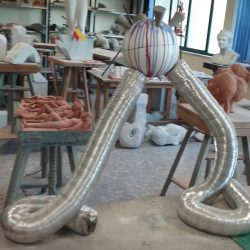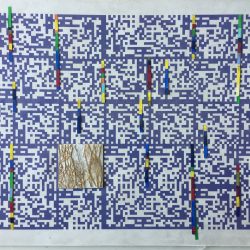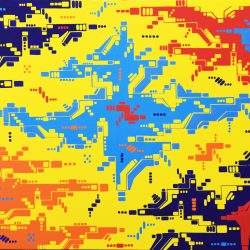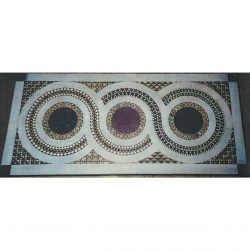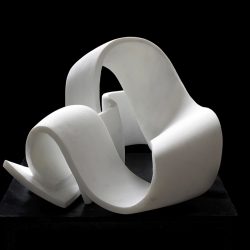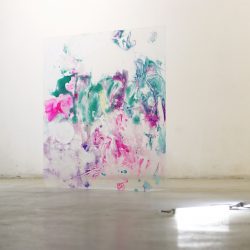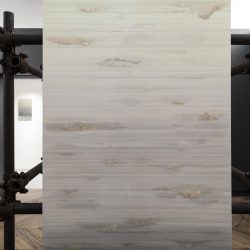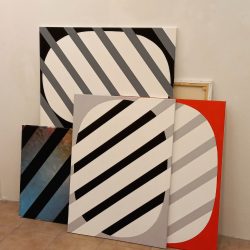work
Quattro Quarti
| category | Photography |
| subject | Abstract |
| tags | |
| base | 30 cm |
| height | 20 cm |
| depth | 0 cm |
| year | 2020 |
Technique: photography and painting
Edition: one copy
Support: photography
In the summer of 1922 Alfred Stieglitz began photographing the clouds: tilting his camera towards the sky, he gives life to abstract images with ethereal shapes.
Stieglitz calls these photographs Equivalent, thus associating the vertiginous transformation of the clouds with his mood.
Clouds like a mirror reflect his most intimate experiences, his thoughts, emotions, like a map of his inner landscape.
Today taking photography is a gesture that accompanies daily life. The action of photographing is like breathing, you no longer notice it. Such an amount of images undermines our ability to think, poisons our mental world.
The static and moving images that dot the social media space look terribly alike. It is a lazy world and rather overloaded with information, where the individual is inclined not to be attracted to something in particular:
the interest in the contents therefore remains on the surface.
One of the many recurring subjects that can be found within it are millions of images depicting simple clouds.
To cope with this poisoning, 4/4 wants to insistently impress, load with substance these contents that resemble each other from the beginning, collecting and rethinking photographs depicting clouds, already existing. It removes them from the great flow of contemporary communication to appropriate and rewrite them in search of a new process of attribution of meaning.
In this regard, the musical act intervenes, the organization of a sound composition, which, when it is performed, simultaneously reveals and impresses.
These images become bodies that absorb matter through an act of rewriting that becomes individual expression.
A gesture that is a symbol of structure, thought, project and uniqueness.
Therefore, while the photograph is struck by the sticks soaked in pictorial matter, the image changes.
The viewer is directly subjected to this transformation process: the photographs twist and evolve under his own eyes.
Edition: one copy
Support: photography
In the summer of 1922 Alfred Stieglitz began photographing the clouds: tilting his camera towards the sky, he gives life to abstract images with ethereal shapes.
Stieglitz calls these photographs Equivalent, thus associating the vertiginous transformation of the clouds with his mood.
Clouds like a mirror reflect his most intimate experiences, his thoughts, emotions, like a map of his inner landscape.
Today taking photography is a gesture that accompanies daily life. The action of photographing is like breathing, you no longer notice it. Such an amount of images undermines our ability to think, poisons our mental world.
The static and moving images that dot the social media space look terribly alike. It is a lazy world and rather overloaded with information, where the individual is inclined not to be attracted to something in particular:
the interest in the contents therefore remains on the surface.
One of the many recurring subjects that can be found within it are millions of images depicting simple clouds.
To cope with this poisoning, 4/4 wants to insistently impress, load with substance these contents that resemble each other from the beginning, collecting and rethinking photographs depicting clouds, already existing. It removes them from the great flow of contemporary communication to appropriate and rewrite them in search of a new process of attribution of meaning.
In this regard, the musical act intervenes, the organization of a sound composition, which, when it is performed, simultaneously reveals and impresses.
These images become bodies that absorb matter through an act of rewriting that becomes individual expression.
A gesture that is a symbol of structure, thought, project and uniqueness.
Therefore, while the photograph is struck by the sticks soaked in pictorial matter, the image changes.
The viewer is directly subjected to this transformation process: the photographs twist and evolve under his own eyes.



